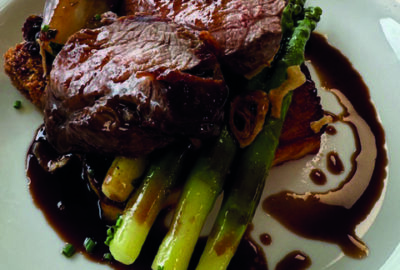Food allergies among children are on the increase according to recent figures. A report from Natasha’s Allergy Research Foundation (NARF) says the number of cases of children hospitalised with severe allergic reactions in England has increased by 72% over the last six years (NHS digital data). The number of hospital admissions of those under 18 years old with anaphylactic shock during 2018-2019 is 1,746 compared to 1,015 in 2013-14 – an increase of over 600.
Tanya Ednan-Laperouse from NARF says: “These terrifying figures show we are facing an allergy emergency. The number of children with allergies and suffering severe allergic reactions is rising year-on-year at a deeply alarming rate. Scientists don’t yet understand why the numbers of children with allergies are on the rise which is why it is vital that we invest in large scale research projects into both the causes and potential cures.”
Various reasons have been cited for the upturn in food allergies such as dietary changes, environmental issues, as well as the consumption of more ready meals and takeaways. Jacqui McPeake from JACS Ltd, allergen and catering specialist, says: “We eat a much broader diet than previously – for example, the availability of foods such as pineapple and strawberries all year round, regardless of the season. The use of preservatives in processed foods also contribute towards the issue.”
This increase means caterers in schools and universities must be proactive in managing food allergies, which can be life-threatening.
Stephen Forster, national chair, LACA (the ‘School Food People’ representing 3,300 different organisations providing 3 million lunches in 22,000 schools daily), says “Robust allergens processes must be in place for caterers in schools to ensure the safety of all consumers. This is true regardless of Covid-19 and the style of service. To help with this, LACA has
launched an allergens strategy that includes a risk assessment to help caterers provide safe meals for children, while offering reassurance for parents and teachers.”
INTOLERANCE VERSUS ALLERGY
One of the major issues is confusion between intolerances and allergies. A food intolerance or insensitivity is when someone has difficulty digesting a food and results in symptoms such as bloating and stomach pain whereas a food allergy can trigger an anaphylactic attack. This requires immediate emergency response. Symptoms can include a swollen tongue and difficulty in swallowing. The common causes of severe allergic reactions (anaphylaxis) include foods such as peanuts, tree nuts, milk, eggs, shellfish, fish, sesame seeds and kiwi fruit, although other foods have been known to trigger it. According to the Anaphylaxis Campaign, peanut allergy is particularly common with one in 70 children nationwide thought to be affected.
COMMUNICATION IS KEY
For both schools and universities, communication is vital. As Jacqui McPeake says “The school caterer needs to discuss menu options with parents and how the food will be served. A method of identification of the pupil must be agreed, particularly for infant children so that caterers can identify which child has what allergy.”
University students with food allergies are vulnerable when they leave home, as they will have to manage their allergies themselves. “Unless the student has a meal package, the caterer may not be aware that the student has food allergies,” says Jacqui. “A positive attitude to managing food allergies will encourage students to talk to the catering team.”
Mike Haslin, CEO, The University Caterers’ Organisation (TUCO) says “There is a great responsibility for caterers to ensure all students can eat and drink safely. With the addition of Covid-19 measures, that responsibility is even greater than ever. Caterers must be aware that any changes made to their service while adapting to Covid-19 must also be allergen compliant.”
TUCO has developed a Code of Practice on the management of food allergen awareness, setting out standards for compliance such as the need for training and action in several areas such as labelling, auditing and emergency procedures.
THE RIGHT INGREDIENTS
Ingredients must be checked every time in case they change. When storing products, ‘free from’ items should be kept in their own area. Julian Edwards, CEO from Allergen Accreditation, says “Some operators use colour coded containers – purple, for example, to denote allergenic ingredients. This prompts staff to be extra vigilant. Foods that are decanted need to be specially labelled.”
When preparing dishes, great care must be taken to use separate work surfaces, chopping boards and utensils to avoid cross-contamination. For example, a separate toaster for gluten free bread. Another great example, which Julian mentioned, is colour coded boxes with utensils including spatula, whisk, spoon, dish cloth and oven mitts only for gluten free baking.
ON THE MENU
Menus must clearly state whether the top 14 EU food allergens are contained in dishes. In the current COVID-19 situation, it makes sense to use digital technology for menus and promotions. As Julian points out, printed menus should be laminated or at least washable so they can be reused. For schools and universities, wall mounted and fixed menus are a great idea. “We suggest using descriptive terms such as sesame infused crusty bread which makes it obvious that certain ingredients and potentially harmful
allergens are present,” he says.
For university students, menus need to be available online with allergen information. Jacqui says “Technology in the form of Apps or QR codes for mobile phones will enable students to check the ingredients.”
STAFF TRAINING
Staff need to understand food allergies and how to cater for them. This includes knowing the ingredients of a particular dish. Jacqui McPeake conducts Level 2 training for team members which demonstrates how to manage allergen procedures in a busy working environment, while level 3 is recommended for supervisors, chefs and managers. Level 3 is a recognised qualification and is provided through a series of video content and an online assessment. “Learners can take the course at their convenience,” she adds.
The TUCO training academy delivers two day courses on allergen awareness. For school caterers, the LACA web site offers advice and guidance for catering for students with food allergies. It provides a risk
assessment tool for members to use in the development of meals for children who suffer from food intolerances or require special medical diets.
As the number of people with food allergies continues to rise, schools and universities will also see a steady increase in students affected. This means precautions must be taken all along the food chain from when food is delivered to when it is served.


